YEARS OF EXPERIENCE IN THE INDUSTRY
YEARS OF EXPERIENCE IN THE INDUSTRY
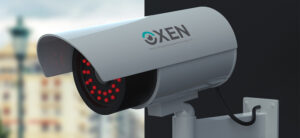
Closed-circuit television, better known as CCTV or video surveillance, employs a network of interconnected cameras and recording systems.
A closed-circuit system operates independently, unless partnered with a larger ELV integrated system, and is an effective way to monitor and secure sensitive areas.
Cameras can be wired or wirelessly connected, and the presence of the cameras alone is proven to be an effective deterrent for any potential threats.

Access Control Systems are a crucial feature of any security system, and are used to secure, monitor and manage staff access throughout a building or set of buildings.
Staff can use access cards or biometric identification, such as fingerprints, to access various areas of the building.
These systems are remarkably advanced, and communicate wirelessly using the local area network.
Access Control Systems can function as a part of a larger integrated ELV system, to simplify control of multiple different systems.

Networking hardware, also know as network equipment or computer networking devices, are electronic devices which are required for communication and interaction between devices on a computer network.
Specifically, they mediate data transmission in a computer network.
Networking devices includes a broad range of equipment which can be classified as core network component which interconnect other network components, hybrid components which can be found in the core or border of a network and hardware or software components which typically sit on the connection point of different networks.

IPTV is the secure and reliable delivery of entertainment video and related services, such as Live TV, Video On Demand (VOD) and Interactive TV (iTV), to subscribers of a given client over Internet Protocol (IP) networks, rather than using traditional terrestrial, satellite, and cable television formats.
These services are delivered across an access-agnostic, packet-switched network that employs the IP protocol to transport the audio, video and control signals.
With IPTV deployments, network security and performance are tightly managed to ensure a superior entertainment experience, resulting in a compelling business environment for content providers, advertisers and customers alike.

Wi-Fi technology allows devices such as mobile phones, computers and other equipment to connect to the internet and exchange information.
With wireless networking, homes, telecommunications networks and businesses can establish a local internet connection without the costly process of installing cables in a building.

Internet Protocol (IP) telephony is a category of technology used for the delivery of voice communications and multimedia over Internet Protocol (IP) networks, such as the Internet.

A network operations center (NOC) also known as a “network management center”, is one or more locations from which network monitoring and control, or network management, is exercised over a computer, telecommunication or satellite network.
A NOC is a centralized location where a company and their staff can provide supervision 24 hours a day to help monitor and manage a company’s services, databases, external services, firewalls, and network.
So basically, a NOC is the basis of a company’s nervous system. In the matter of security, a NOC is often the first line of defense against any attacks or disruptions a company or enterprise might experience with their telecommunication networks.

A Building Management System (BMS), also known as a Building Automation System (BAS), is a computer-based control system that controls and monitors a building’s mechanical and electrical equipment, such as its ventilation, lighting, power, fire, and security systems.
A BMS consists of both software and hardware, and can integrate the use of Internet protocols and open standards such as BACnet and LonWorks.
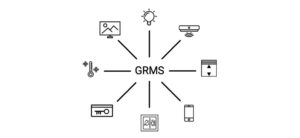
A Guest Room Management System (GRMS) is an automation system that connects with a hotel’s BMS and other third party systems to seamlessly manage the energy consumption and varying needs of individual rooms.
It is the most efficient way to ensure guest satisfaction.
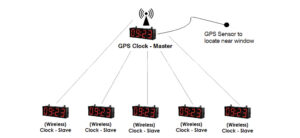
A master clock system is an interconnected system of clocks whereby a number of secondary clocks on a given network synchronize according to one primary clock, also known as a master clock, which maintains accurate time from a hardware clock source such as GPS, GLONASS, or Galileo.
In this way, the time across both the primary and secondary clocks remains consistent.

Road Blockers are used in high-security areas to deter unauthorized vehicles and protect against hostile vehicular attack.
They are employed to secure control of entry and exit points in military areas, public institutions, banks, consulates, factories, and a variety of other workplaces and organizations that require heightened safety measures.
Road blockers can be used in cooperation with cork or arm barriers for maximum security.

A boom barrier, also called a boom gate, is a bar or pole employed to control vehicular or pedestrian access through a designated point.
The barrier arm rises to a near vertical position on command to allow traffic to pass through.
Most often used in airports, office buildings, and parking structures, boom barriers provide a simple and reliable solution for access control.
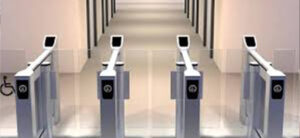
A turnstile is an automated gate which allows one person to pass through at a time.
Turnstiles are a popular solution used to restrict passage only to people who insert a coin, ticket, or a pass card, such as in public transportation hubs or office buildings.
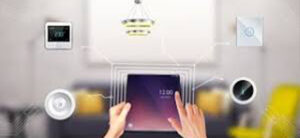
A Lighting Control Systems (LCS) is an intelligent network-based solution that allows for communication between various related system inputs and outputs via one or more central computing devices.
These systems are widely used for both indoor and outdoor lighting in commercial, industrial, and residential spaces in order to maximize energy savings, comply with building codes and conservation programs, and ensure that the right amount of light is provided in a way that is both efficient and aesthetically pleasing.
Lighting Control Systems are often referred to as “Smart Lighting”.

A Public Address (PA) System uses microphones, amplifiers, loudspeakers and related equipment to increase the volume and reach of a live or recorded sound.
PA Systems are used in public venues that require a voice to be heard at a distance or over a large area, such as stadiums, music venues, public transportation vehicles and facilities, and live events.
A PA System may include multiple microphones or other sound sources, a mixing console to combine and modify multiple sound sources, and multiple amplifiers and loudspeakers in the event that higher volume or wider distribution is necessary.

An IP Intercom System is a cohesive audio communication system that utilizes packet audio technology over an IP network to achieve fast, accurate communications with optimal security and reliability.
Applications range from conversation, paging broadcasting and BGM broadcasting to emergency paging and broadcasting, audio triggering and other security functions.
The system frequency response extends to 7 kHZ, enabling reliable transmission of a full range of emergency communications, including clear, easily understandable PA announcements.

Home Automation Systems are used to monitor and control lighting, climate, entertainment systems, and appliance in the home remotely.
Some Home Automation Systems also include home security elements, such as Access Control Systems and Alarm Systems.
Home devices connected to the internet make up a significant portion of the Internet of Things (IoT).

In the modern world, Audio Visual (AV) Systems are increasingly commonplace in both business and leisure environments.
These systems range in sophistication, and can be as simple as a single source display device or as complicated as a total integration of various sources, such as live television, presentation displays, video conferencing systems, lighting control devices, temperature control inputs, music systems, digital signage, and more.
We provide a comprehensive AV experience, including sales, installation and support.

A Public Address (PA) System is a system that allows for the amplification of a voice over a large area using microphones and loudspeakers.
These systems are used to enhance the volume of live or recorded sounds.
A general alarm system allows for control of alarms and flashing lights, or beacons, from a remote distance.
Combines, the public address and general alarm systems are an effective tool for relaying information in case of an emergency situation.
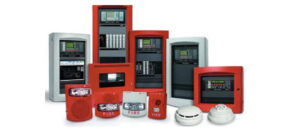
A fire alarm system utilizes a number of cooperative devices to detect smoke, fire, carbon monoxide or other emergencies and warn people in the area via visual and audio appliances.
These alarms may be activated automatically by smoke or heat detectors, or via manual fire alarm activation devices such as manual call points or pull stations.
Alarms can range in sophistication from motorized bells or wall mounted sounders or horns to speaker strobes, which sound an alarm followed by a recorded message warning people inside the building not to use the elevators.